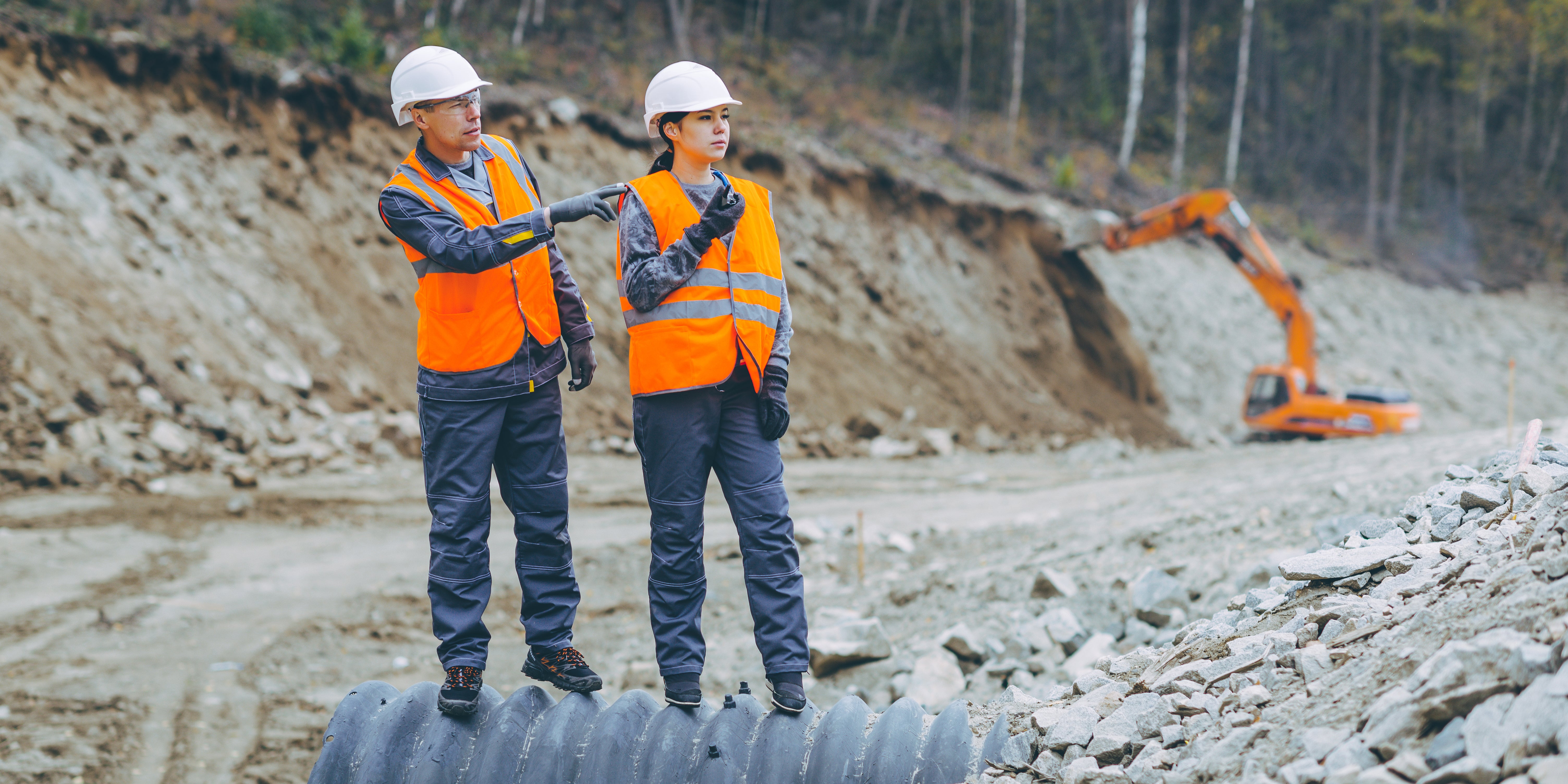 Ouvriers sur un chantier de construction. Photo : © Mark Agnor/Shutterstock
Ouvriers sur un chantier de construction. Photo : © Mark Agnor/Shutterstock
This article was originally published by The Economist Intelligence Unit, as part of a research project supported by UNOPS: "The critical role of infrastructure for the Sustainable Development Goals".
Infrastructure is not gender-neutral. Gaps in access to good infrastructure affect women disproportionately. Women need to have a voice in setting priorities in the design and the operation of infrastructure if it is to have the desired development impact.
Despite decades of progress, the global infrastructure gap is still significant: around 940m people live without electricity, 2.2bn lack safely managed water, 4.2bn lack safely managed sanitation facilities and 1bn live more than 2 km away from an all-season road.
This gap has a different meaning for women: infrastructure is not gender-neutral. The gaps in access to good infrastructure—and how it is designed, built and run—affects men and women differently. For instance, it is well documented that women are responsible for obtaining water for domestic use in most countries, which has a big impact on how they spend their time. In Niger, the average time women and girls spend fetching water adds up to 13 days a year. Lack of access to electricity results in household drudgery for women, due to lack of lighting, electric water pumps and refrigeration.
Conversely, women benefit tremendously from improved access to electricity, for example through better outdoor lighting around the house and in public spaces. This can improve their personal security and mobility.
Historically, infrastructure design has not properly addressed the different needs of men and women. Infrastructure planners usually treat the household as homogeneous, and primarily from a male perspective. There is evidence that women put higher priority on water quality than men. Lack of proper and safe sanitation facilities in public spaces—especially in the context of refugee or internally displaced people’s camps—increases the stigmatization of menstruation, urinary tract infections and the risk of gender-based violence. Men don’t suffer such impacts from a lack of sanitation facilities.
"Women can also play a critical role in helping close the infrastructure gap. Diversity contributes to innovation. Women’s perspectives in the design and management of infrastructure will both enhance service delivery today and contribute to innovation in the future."
The gender dimension of urban transport design
Similarly, poor urban transport design has a disproportionately negative effect on women, preventing them from accessing jobs, schools and health centers. Deficient design and operation of urban transport infrastructure, such as commuter buses and trains, exacerbates the risks to women’s personal safety and their exposure to gender-based violence. This was articulated by women who participated in a forthcoming World Bank Urban Transport Study (What makes her move? A study of women’s agency in mobility in three Latin American cities):
“My husband asked me why I was thinking of working elsewhere. He said: ‘working outside means commuting. You will have to take a train and put up with things like men stalking you. You aren’t going to like it. It means bosses dishing out orders, whereas here you are working for yourself, at home, with time to use the car and take the kid for a ride.’ He was keen to open a snack bar. He sold our car and set me up to work in the snack bar.”
Middle-aged woman, low-income neighborhood in Rio de Janeiro, Brazil
A study on the different uses of urban transport for men and women in the city of Buenos Aires, Argentina, shows that women are often limited to jobs closer to home. They take multiple trips on urban transport, combining work and household chores—the lack of integrated, multimodal transport systems makes it too costly in time and money to work far from home. This seriously limits women’s earning potential. In parts of the city, men with children effectively have access to over 80% more jobs than their female counterparts.
Women’s voice in design and operation
Women need to have a voice in setting priorities in the design and operation of infrastructure if it is to have the desired development impact. Safety and security concerns need to be paramount if infrastructure is to be gender-inclusive. In the absence of an assurance of the safety of women, gender norms are likely to prevent them from actively participating in the labor market and community activities. And for such safety to be routinely assured, more work needs to be done on changing behavior. A Mexico Urban Transport Project worked with bus drivers to identify and implement measures to prevent sexual harassment and gender-based violence in buses, leading to more working women using buses.
Women can also play a critical role in helping close the infrastructure gap. Diversity contributes to innovation. Women’s perspectives in the design and management of infrastructure will both enhance service delivery today and contribute to innovation in the future. We need more women in infrastructure—in design firms, construction companies and utilities. An example of an initiative to enhance women’s participation and influence in infrastructure is the Women in Power Sector Network in South Asia. This aims to enable more women to join utilities, so that they can make a stronger contribution to promoting inclusive infrastructure that works for both men and women.



Join the Conversation